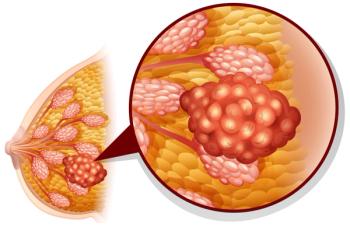
Disadvantaged Areas Have Worse Cancer Surgery Access, Mortality
Data highlight that patients who are in Black and poor majority areas are less likely to receive liver ablation or colorectal liver metastasis in surgical cancer care.
Patients who live in predominantly Black and poor areas have less access to surgical care across different cancer types and have worse survival outcomes compared with predominantly White and wealthy areas, according to Muhammad Talha Waheed, MD.
In a conversation with CancerNetwork®, Waheed, a research fellow in the Department of Surgical Oncology at City of Hope National Medical Center in Duarte, California, discussed findings from a retrospective study highlighting disparities in cancer surgery among patients across different areas with varying socioeconomic characteristics. He presented these findings at the
Compared with those in more privileged areas, which the authors defined as White and wealthy majority places, patients who resided in deprived areas—defined as Black and poor majority locations—had worse survival following cancer surgery, especially in the rectal cancer population (HR, 1.44; P <.001). Additionally, patients who resided in privileged areas had a higher likelihood of receiving guideline-concordant care for all studied cancer types (P <.001) or chemotherapy plus surgery for pancreatic or stomach cancer (P <.001).
Transcript:
In terms of access, we saw that patients who were living in disadvantaged areas were in Black and poor majority areas. I would like to emphasize that the way we stratified our analysis was that we were looking at any patient of any race or ethnicity living in these areas. It was not just Black and poor patients, but patients who were residing in areas that are Black and poor majority areas. We saw that patients who were living in these areas had a higher stage of disease at diagnosis; they were not getting diagnosed earlier. They were more likely to undergo emergent surgery, which tells us that they did not have good referrals or good access to primary care, where we’re picking up the disease earlier and sending them for elective surgery for that matter. They were also less likely to initiate any sort of therapy within 2 or 4 weeks of diagnosis. We saw that these patients had less access to Commission On Care [COC]–accredited institutions, they were less likely to undergo care in National Cancer Institute [NCI]–designated cancer centers, and they were less likely to undergo care in teaching institutes.
Then comes the appropriateness or the guideline-concordant care part. We saw notable differences; these patients were less likely to receive surgery for stage I through III lung, esophageal, or colorectal cancers. They were less likely to get surgery and chemotherapy for stage I to III pancreatic and stage II to III lung and gastric cancers. They were less likely to receive liver ablation or resection for colorectal liver metastasis. We saw that for all these cancers, patients who were living in privileged or White and wealthy majority areas were likely to have a better median overall survival. Across the band, we had better findings for patients who were living in White and Wealthy majority areas.
Reference
Waheed MT, Sullivan KM, Haye S, et al. Impact of racialized residential segregation on guideline concordant cancer care and survival. Presented at the Society of Surgical Oncology (SSO) 2024 Annual Meeting; March 20 – 23, 2024; Atlanta, GA; abstract E126.
Newsletter
Stay up to date on recent advances in the multidisciplinary approach to cancer.





















































































